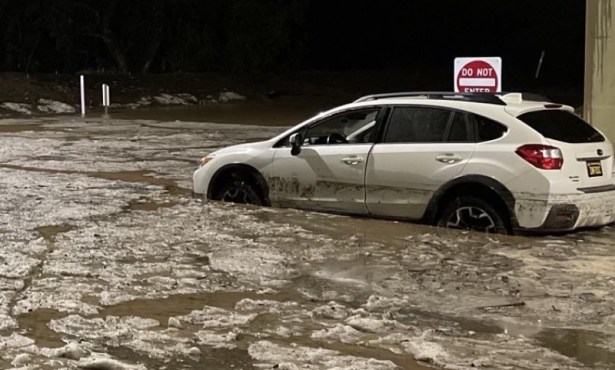State of County Addresses Community Issues, Economic Growth in Santa Barbara County
South Coast Chamber of Commerce's First In-Person Address Touches on Rise in Homelessness, Unemployment Due to COVID Pandemic

The first in-person State of the County was held Thursday as the final part of the Santa Barbara South Coast Chamber of Commerce’s four-part State of the City/County series, meant to connect and provide up-to-date information to business and government officials.
In July 2020, the Santa Barbara Chamber of Commerce merged with the chambers of Goleta and Carpinteria Valley to form the Santa Barbara South Coast Chamber of Commerce. The South Coast Chamber oversees 1,100 businesses from Goleta to Carpinteria.
The key speakers at the event included Mona Miyasato, county executive officer of Santa Barbara County; Nancy Anderson, assistant county executive officer of Santa Barbara County; Bob Nelson, chair of the county Board of Supervisors; and Peter Rupert, director of the UC Santa Barbara Economic Forecast Project.
The speakers touched on various issues in the community, some made worse by the COVID-19 pandemic, such as housing insecurity, unemployment, and homelessness.
County Executive Officer Miyasato spoke about a recently approved $1.35 billion budget from the Board of Supervisors, as well as the growing tax revenue from cannabis. This past year, Miyasato said, the county generated $15.7 million in tax revenue from cannabis. Much of this revenue can be put toward projects to improve community life, such as housing and homelessness programs, alternative energy projects, and libraries.
Sign up for Indy Today to receive fresh news from Independent.com, in your inbox, every morning.
“We know there is still much more to do in this recovery, and there is more than we have funding for, but I am hopeful that greater progress can be made in our region and in our county,” Miyasato said.
Over this past year, the county has also provided more than 26,700 bed nights to house unsheltered people and help quell the spread of COVID-19, Miyasato said. Of that group, 50 percent have transferred to permanent supportive housing.
Supervisor Nelson spoke about how the Board of Supervisors can address homelessness, specifically those who are struggling with untreated mental-health issues or drug addiction or possible victims of human trafficking and domestic violence. Nelson said projects such as the Bridgehouse Shelter project in Isla Vista, now in Lompoc, do well in assessing the needs of those seeking shelter and provide more adequate and personal care.
Rupert, director of the UCSB Economic Forecaster Project, spoke about the labor shortage in the county coming out of the pandemic. Unemployment in Santa Barbara pre-COVID was about 3.8 percent, Rupert said, and today it’s about 5.5 percent. There are about 12,000 unemployed people in the county currently, but Rupert said this is not from a lack of available jobs.
“There are more jobs than people looking for them,” he said.
Food and Hospitality industries were among those hit the hardest during the pandemic. The food and drink industry in the county lost about 2,000 workers, and the hotel and hospitality industry lost 35 percent of its workers, according to Rupert.
Despite this, Rupert and Nelson are hopeful that as tourism continues to increase in Santa Barbara, these industries will bounce back.
Support the Santa Barbara Independent through a long-term or a single contribution.



